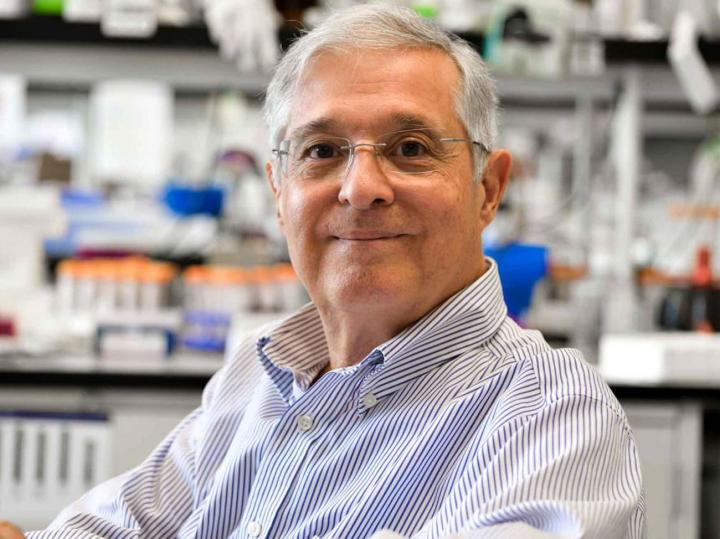A single dose of AAV8-TNAP-D10 may be safe and effective for hypophosphatasia
LA JOLLA, CALIF. – June 7, 2021 – A preclinical study led by scientists at Sanford Burnham Prebys has established that AAV8-TNAP-D10–a gene therapy that replaces a key enzyme found in bone–may be a safe and effective single-dose treatment for hypophosphatasia (HPP). The study, published in the Journal of Bone and Mineral Research and performed in a murine model of the disease, further supports advancing the therapy toward human clinical trials.
“This is the most promising gene therapy study to date demonstrating a successful increase in life span, and improvement of the skeletal and dental abnormalities associated with HPP, without signs of side effects in other organs,” says José Luis Millán, Ph.D., professor in the Human Genetics Program at Sanford Burnham Prebys. “We’re hopeful that this research will lead to a curative therapy–an alternative for patients who must currently undergo multiple injections of medication per week, often associated with injection-site reactions, to maintain their health.”
HPP–also known as soft bone disease–is an inherited, rare bone condition of broad-ranging severity that causes life-threatening disease in approximately one per 100,000 live births. Depending on the severity of the skeletal disease, symptoms can include deformity of the limbs and chest, pneumonia, and recurrent fractures. Although there is currently no cure for HPP, patients may benefit from injections of asfotase alfa–a mineral-targeted form of the missing enzyme called TNAP–which is an FDA-approved therapy based on Millán’s more than 20 years of pioneering research on the enzyme and characterized in his laboratory for preclinical efficacy.
The new study evaluated the efficacy of a single intramuscular injection of AAV8-TNAP-D10 in a murine model of infantile HPP. AAV8-TNAP-D10 extended the life span of the mice; and no ectopic calcifications–a potential side effect of the current therapy–were observed in the kidneys, aorta, coronary arteries or brain of the treated mice. AAV8-TNAP-D10 is an adeno-associated virus gene construct that incorporates the gene encoding mineral-targeted TNAP-D10.
“This is a much-needed advance in the field of HPP research,” says Deborah Fowler, founder and president of Soft Bones, a leading advocacy group dedicated to the community of patients, caregivers and families living with HPP. “Our patients vary in severity, and there remains a significant unmet need for those unable to receive treatment and those who experience administration challenges with the chronic therapy.”
“Our research efforts are committed to improving the lives of people affected by HPP,” says Millán. “I’m grateful to the many individuals who enabled this latest study–from the National Institutes of Health, which has generously funded our research since the 1980s, to the collaborators and lab members who are instrumental in our scientific advances. “This work is the culmination of more than 10 years of collaborative efforts with gene therapy experts Professor Takashi Shimada and Dr. Koichi Miyake from Nippon Medical School in Tokyo, to identify the best vector and route of delivery of the TNAP-D10 encoding vector to treat HPP,” adds Millán.
###
Additional authors in the current study are Yuka Kinoshita, Amadeu de Oliveria, Sonoko Narisawa at Sanford Burnham Prebys; Fatma F. Mohamed and Brian Foster at The Ohio State University; and Koichi Miyake at the Nippon Medical School, Japan.
The study’s DOI is 10.1002/jbmr.4382
This work was funded by grant DE12889 from the National Institute of Dental and Craniofacial Research (NIDCR) of the National Institutes of Health (NIH), and R03DE028411 from NIDCR/NIH and a grant from Soft Bones.
All authors state that they have no conflicts of interest.
About Sanford Burnham Prebys
Sanford Burnham Prebys is a preeminent, independent biomedical research institute dedicated to understanding human biology and disease and advancing scientific discoveries to profoundly impact human health. For more than 40 years, our research has produced breakthroughs in cancer, neuroscience, immunology and children’s diseases, and is anchored by our NCI-designated Cancer Center and advanced drug discovery capabilities. For more information, visit us at SBPdiscovery.org or on Facebook at facebook.com/SBPdiscovery and on Twitter @SBPdiscovery.
Media Contact
Susan Gammon
[email protected]
Related Journal Article
http://dx.





